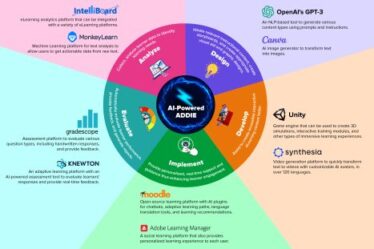
Top 2020 Trends In Higher Education Sector—Infographic
Here are some curated trends in the higher education sector. These trends will give you an overview of what is happening in the sector in 2020.
1. Increased Acceptance Of Online Education
With the availability of fast and cheap internet everywhere, more and more institutions are implementing fully online education. The decreasing cost of hardware like laptops and student licensing of software is also helping this trend. With this, you can expect all institutions switching to flip class concept where students learn from home and practice in class.
Try these tools for an effective online teaching experience:
- Video conference
- Virtual whiteboard
2. Future Of Work
The future of work is being reshaped with new trends emerging in the global workforce management. Is your institution coaching on this?
Shaping the future of work:
- Artificial Intelligence
- Off-balance sheet workers
These two are changing the concepts of workplace workforce and nature of work.
3. Content Innovations
The eLearning content providers and platforms are coming up with innovations in the way content is created and shared to keep learners engaged and track progress in real time.
Content trends:
- Short videos
- Interactive contents
The major challenge in online learning is the attention span of students and making the content itself keep the students engaged in learning.
4. Online ERP
Higher educational institutions can no longer operate without a fully online ERP solution. ERP software solutions help in the efficient operations of higher educational institutions by digitizing the day-to-day operations of colleges and universities. Online ERP solutions save the time of faculty and reduce the cost of administration.
5. Better LMS
Learning Management Systems are innovating, from traditional standalone platforms t user-friendly interfaces.
6. Mobile Devices
Many higher educational institutions are allowing students to bring mobile devices to the classroom because of the unavoidability of the device and technology even in learning.
7. Artificial Intelligence
Artificial Intelligence is the intelligence of machines that can be used to catalyze the operational activities of colleges and universities. AI is connecting all the different digital tools in a higher educational institution to provide a single streamlined experience for the different stakeholders—teachers, students, parents, administrators, and leadership.
Benefits for higher ed:
- Automation of administration
- Assist in teaching
- Assist in learning
- Smart content creation
- Inclusion and diversity
- Collective knowledge
- Universal access
- Speed in decision making
- Saves time and reduces costs
8. Mental Health
Faculty and leadership are implementing tools and processes to help students facing anxiety, depression, and other concerns.
9. Learning Analytics
Higher education institutions are implementing specialized analytical tools for studying the patterns in academic performance to guide the different activities in academics.
10. Data-Driven Decisions
In DDDM or Data-Driven Decision Making, decisions are made based on factual, verifiable information. DDDM supplements intuition with past trends and future projections. Here the software (machine) and management (human) work together to make decisions that can help the institution achieve their academic and business goals faster.
11. Augmented Reality
Augmented Reality (AR) technology helps colleges and universities add layers of digital view on top of the real-time physical view. This is achieved with the help of specialized tools for creating Augmented Reality. Once Augmented Reality is created, the users can navigate it using digital tools, like a smartphone or tablet. This is most widely used for creating real-time campus navigation maps.
12. Virtual Reality
Virtual Reality (VR) is an immersive simulation of digital reality that is completely separated from physical reality. This is used for creating virtual campus tours from the browser. The students and parents seeking admission to the institution can use this simulation to learn about the campus. VR is also widely used in eLearning content and activities.
13. Diversity And Inclusion
Diversity and inclusion is a hot topic for discussion in higher education leadership. We are now witnessing how technology can help overcome the challenges in diversity and learning faced by students joining the campus from various backgrounds. The leadership is aware of how diversity and inclusion enrich the educational experience and promotes best practices for a healthy society.
14. Internet Of Things
IoT (Internet of Things) is the network of interconnected devices spread across the different locations in the campus. IoT is found helpful in improving the learning outcomes, operational efficiency, and safety of the campus. It is expected to bring a paradigm shift in higher education.
15. Privacy
Privacy is the fundamental right of all the users of campus digital technology tools. The users include students, parents, teachers, and other faculty. Privacy cannot be achieved with technology alone. Privacy includes the protection of personal data and ensuring that users have control over their personal data. It is about policies and the system and policies put in place to ensure the policies are followed.


